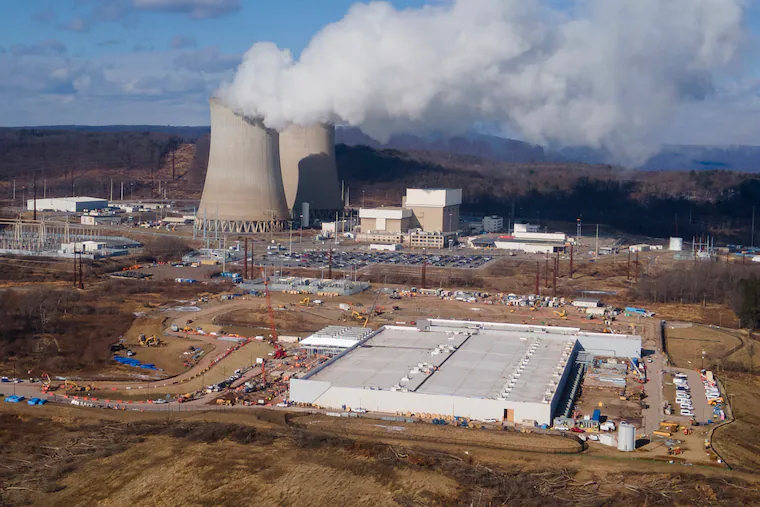The AI industrial revolution has begun. History suggests it won’t be positive for the middle class

Job growth has been soft for the past few months and most analysts believe it is due to a slowing economy. But that explanation might be wrong.
The job slowdown could be the result of extraordinary, not customary, economic factors.
As an economic forecaster, I first need to understand where we are in the economic cycle so I can determine where we are going. The economic data are parsed to find clues about the state of the economy and what might come next.
The problem economists face right now is that we may be reading the economic tea leaves incorrectly.
Why? Because the job market may not be reflecting a temporary cyclical slowdown, but instead is reacting to a more fundamental, longer-term structural change in the economy.
Over the last 250 years, the U.S. economy has faced four stages of industrial revolution where the economic foundations have been upended by major technological changes.
The first stage, lasting roughly from the late 1700s to the mid-1800s, was the agricultural revolution. Steam- and water-powered machines displaced farmworkers, who moved to cities where the jobs were being created. The age of urbanization was ushered in.
The second phase, from the late 1800s to the early 1900s was powered by the development of the internal combustion engine and the widespread use of electricity that revolutionized transportation and industrial production.
The third stage, from the mid-1980s to early 2020s, was brought on by the introduction of computers and the digitization of the economy. This transformed the way we handled information and led to new means of communicating, improved productivity, and the production of goods thought only to exist in science fiction books.
In each of those first three stages, some feared workers would be left behind. Without the skills to find employment in the new economies, unemployment and poverty rates would soar. To no small extent that was correct.
For decades, the movement from farm to city caused great changes and deprivation. But over time, goods production expanded to meet growing demand from urban dwellers, and jobs and living standards increased.
In the second stage, the shift from rudimentary industrial structures to the mass production economy caused many workers in the old economy to lose their jobs. Ultimately, they found employment in the new economy. Those who built buggies wound up building automobiles.
Did unemployment and poverty rise? Yes. But technology gains again shortened the transition phase.
As for the computer era, with the economy transitioning into high-tech, the demand for highly educated, skilled labor soared, leaving many less-skilled workers behind. Yet once again, the rapid growth of technology-based industries led to improved productivity, rising living standards, and a shortened transition phase.
Which brings us to today.
The age of artificial intelligence and robotics is here and expected to repeat the patterns seen in the previous three stages.
What we learned from the first three stages is that early in the transition phase labor demand falls, usually sharply, and there is little government can do to change it.
Consequently, the weakening employment data we are seeing may not be the result of a cyclical economic slowdown.
Instead, it is likely the data are starting to show the negative labor market effects of the transition to AI. Ultimately, the positive productivity impacts of AI will appear, but later in the transition.
Over the next couple of years, there could be a surge in job displacements as more firms learn how to use AI to reduce their workforces.
And AI is likely to be an equal opportunity job killer. Middle management, accountants, finance experts, designers, architects, and even coders could be replaced by AI. And when 3D computer printing and robotics are linked to AI, even some who work with their hands could be at risk.
AI has the potential to be as disruptive as the steam engine and mechanization were to farmworkers in the first industrial revolution stage, especially since the adoption of the new technology could occur rapidly.
For policymakers, and economists, understanding that we are in an industrial revolution transition phase is key to structuring policies that can meet challenges ahead.
For example, measuring economic growth by the number of jobs created is questionable. Job growth is not likely to be anywhere near what it has been for the past fifty years but GDP growth could be stronger.
Also, cutting interest rates will not likely have a major impact on consumer spending. With middle-income workers losing their jobs, a lower interest rate will not get them to buy houses or vehicles.
However, lower rates would reduce the cost of capital investment and hasten the transition to an AI economy. That might initially accelerate the layoffs.
Meanwhile, reducing government support when the declining demand for workers is being driven by an epochal change — rather than a transitory cyclical slowdown — could worsen the situation.
Ultimately, as the AI economy evolves, job growth will return, as it did with the maturing of the previous three industrial revolution stages.
Unfortunately, we have no idea how fast the change to AI will occur or when the improvement in productivity will appear. Therefore, we have no real sense about the magnitude of the job dislocations in the near term. We just know they are coming.
And one other thing. In the previous three stages, the skewing of the distribution of income accelerated. The shifting of income and wealth from the middle class to the upper class is likely to accelerate again. If you think the top 10% have a lot of wealth now, wait five years.
The great philosopher Yogi Berra is quoted to have said, “the future ain’t what it used to be.” Right now, that appears to be the case, especially for workers.